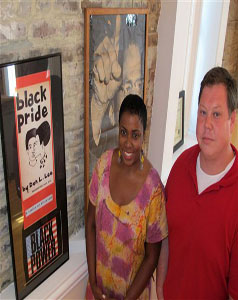
CHARLESTON, S.C. (AP) — In the city where the first shots were fired in a bloody civil war that freed millions of slaves, historians, activists and ordinary folks will discuss the legacy of black power and what it means today.
The three-day conference opening Thursday at the College of Charleston’s Avery Research Center for African American studies includes appearances by activists from the 1960s such as Cleveland Sellers. It also will feature talks about the movement by noted historians and discussion of what black power means in a nation where a black man sits in the White House.
The conference is called “The Fire Every Time: Reframing Black Power Across the Twentieth Century and Beyond.” One of the panels will discuss the so-called Orangeburg Massacre. In that Feb. 8, 1968, incident, three men were killed and 27 people injured after being shot by police during a civil rights protest at what is now South Carolina State University.
Issues facing blacks today such as poverty, access to health care and social justice may be even tougher to deal with than in decades past, said Patricia Williams Lessane, the center’s director.
“We have this false idea of a post-racial society,” she said. “When you start to talk about inequities, people talk about the dream being realized and the playing field being leveled, which clearly isn’t the case.”
Robert Chase, the center’s public historian who is organizing the conference, said historians have long focused on the civil rights movement as those years between 1954 through 1965 and the passage of the Voting Rights Act. The result, he said, is a better democracy where, at least where voting is concerned, race does not matter.
While black power conjures images of violence and urban unrest in the 1960s, “in reality, the black power movement is a longer struggle for African-American freedom, dating to the early part of the 20th Century,” he said.
He said the conference will deal with themes ranging from black power in education and the military to “how the story of the post-civil rights movement has turned into an age of disparity.”
“We want to get at that dynamic that while we have a black president and rising black middle class,” a disproportionate number of blacks live in poverty, have less access to health care and are in prison, he said.
“Many people think we’re there,” he said. “I think the black community itself is divided on what black power means in a contemporary world. I think there are those who have ascribed to middle-class education and success and values and who would not see the need for black power.”
Lessane said that, in a society shaped by the Internet where, unlike the 1960s, there are so many channels, fewer black leaders can speak to masses of black people.
“There are people like an Al Sharpton who continue to champion these issues,” she said. “There are some squeaky wheels out there. But are there as many charismatic figures attracting national attention like a Malcolm X or a Stokley Carmichael? I don’t think so.”
Copyright 2012 The Associated Press.
Photo caption: In this Thursday, Sept. 13, 2012, photo, Patricia Williams Lessane, the director of the College of Charleston’s Avery Research Center for African American History and Culture, and Robert Chase, the center’s public historian, stand next to items in the center in Charleston, S.C. The items are part of an exhibit for a black power conference being held September 20-22, 2012. (AP Photo/Bruce Smith)